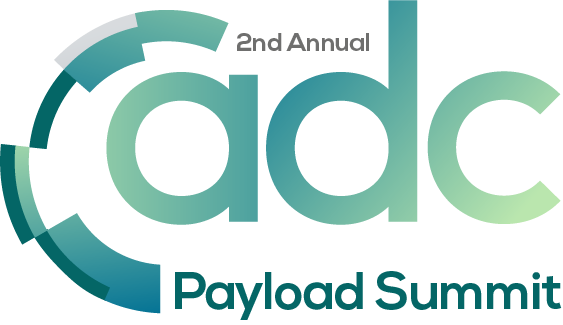Conference Day One: May 7, 2025
8:00 am Registration & Light Breakfast
9:00 am Chair’s Opening Remarks
Advancing Immunostimulatory Payloads for Expanded ADC Modes of Action
9:15 am Structural Insights Into Next-Generation ISACs for Tumor-Specific Immune Activation
Synopsis
- Discussing data demonstrating ISAC induced localized activation of innate immunity within the tumor microenvironment while minimizing systemic immune effects
- Preclinical validation of multiple tumor targets, including data from lead candidate BDC4182 in gastric and pancreatic cancers
- Overcoming challenges in TLR 7/8 Agonist payload conjugation chemistry
9:45 am Engineering STING/TLR Agonist Payloads to Amplify Anti-Tumor Immune Responses Without Triggering Cytokine Induction
Synopsis
- Discussing the synthesis and PK profile of E7766 STING agonist payload for PSMA targeting ADC
- Analyzing in vitro and in vivo studies showing mitigation of ISAC tox concerns affiliated with cytokine induction
- Exploring the therapeutic niche and potential of STING agonist payloads
10:15am Morning Networking Break & Poster Session
Synopsis
Take a break from formal presentations to connect with your peers in a relaxed environment to learn more about the industry’s latest research. If you wish to provide a poster to present, please get in contact with adc@hansonwade.com
Exploring Drug Repurposing & Translation to Conjugates to Differentiate Your IP
11:15 am Structural Optimization of Amanitin-Based RNA Polymerase II Inhibitor Payloads for TROP2 Targeting ADCs
Synopsis
- Understanding the evolution from first-generation (HTP101) to second-generation amanitin payloads demonstrating improved targeting capabilities through both cleavable and non-cleavable linker strategies
- Outlining structural optimization of amanitin payload to enhance overall performance
- Discussing the efficacy of TROP2-expressing tumors in both pancreatic and triplenegative breast cancer models
11:45 am Roundtable Discussion: Navigating the Evolution of ADC Payloads – From Topo1 Success to Future Innovation
Synopsis
Take a break from presentations to connect with fellow payload experts and discuss why Topo1 inhibitors dominated the clinic so fast, what other modes of action and payload classes need to do to match that clinical success, and where there is whitespace for novel payloads to gain ground in a competitive ADC landscape.
Key Discussion Topics:
- Assess the current state of the payload field: How has the surge in payload diversity impacted your work, and what does it mean for potential applications and indications?
- Benchmarking requirements: What technical and clinical milestones must novel payloads achieve to achieve success?
- Post-Topo era: What emerging payload classes show promise to match the rate of growth of Topo I Inhibitors?
- Learning from the past: What historical challenges have limited the broad clinical success of certain payload classes and how can we ensure the next generation of payloads overcome those limitations?
12:30pm Lunch & Networking
1:30 pm Let There Be Light: Photosensitizer Antibody Conjugates (PAC) & Photoactivation for Spatially Controlled Treatment
Synopsis
- Examining spatial and temporal activation by light to reduce on-target off-site toxicity and expand druggable targets
- Discussing two new photomedicine ADC modalities: photosensitizer-antibody conjugates (PACs) for photoimmunotherapy (PIT) or photodynamic therapy (PDT)
- Utilizing photo-cleavable masking groups for prodrugs
Understanding Novel Antibody Oligonucleotide Conjugate Modalities
2:00 pm Physiological & Pharmacokinetic Considerations for Optimizing Oligonucleotide Delivery to Target Tissues Through Antibody Conjugation
Synopsis
- Overview of the current Antibody Oligonucleotide Conjugate (AOC) landscape and discussion into differences in conjugation chemistry between AOCs and ADCs
- Outlining physiological and pharmacokinetic considerations for optimizing oligonucleotide delivery to target tissues through antibody conjugation
- Reviewing data demonstrating enhanced tissue-specific oligonucleotide delivery through AOC approaches compared to traditional delivery methods
2:30pm Afternoon Break & Networking
Synopsis
This is your opportunity to reconnect with peers and meet fellow pioneers, forming important connections to expedite your platform development.
Next-Generation DACs: Optimizing Degraders as Antibody Payloads
3:00 pm SMARCA2/4 Dual Degraders as Next-Generation Precision ADC Payloads
Synopsis
- Design and optimization of key characteristics of degrader payloads
- Advantages of degraders as payloads for antibody drug conjugates
3:30 pm Ligand Design for LYTAC Extracellular Protein Degradation
Synopsis
- Learn how Lysosomal Targeting Chimeras (LYTACs) offer a new opportunity to target classes of secreted proteins which have been challenging for existing therapeutic inhibitors
- Unveil small molecule linker-ligands designed for optimal receptor binding, bioconjugation, and stability of conjugates has enabled new applications using small molecule-protein based LYTACs
- Design and properties of LYTACs to maximize efficiency of target protein degradation
